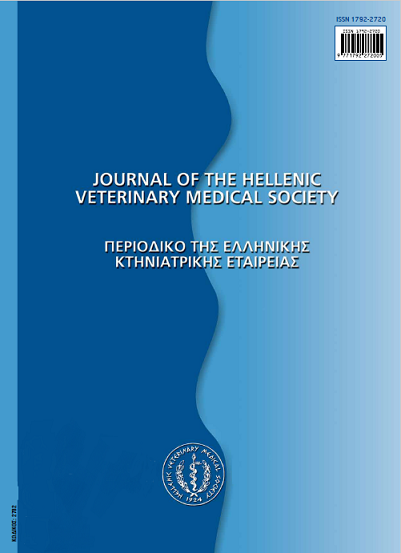Detection and Molecular Identification of Salmonella Strains Isolated from an Industrial Ostriches farm
Аннотация
Poultry salmonellosis, one of the most prevalent diseases and major source of food-borne infections to humans due to consumption of poultry products is worldwide in distribution. The aim of this study was to investigate the incidence of salmonellosis in ostriches by culture and PCR , determination of antibiotic resistance pattern of the isolates and the infected ostriches antibody level. 87 fecal samples from one industrial ostrich farm with clinical signs of diarrhea, weight loss, mortality and reduced hatchability were collected and evaluated for presence of the Salmonella. Salmonella was isolated according to standard culture and biochemical tests. The Salmonella positive samples were serotyped with O and H antisera based on slide and tube agglutination tests. PCR was done for detection of serovars Infantis and Enteritidis. Then the antibiotic resistance against 14 antimicrobial agents were tested. The antibody level of the infected ostriches were measured by WIDAL agglutination test. Results indicated 9.1% (8 of 87) of ostriches were positive for Salmonella. Serotyping results showed 3 samples were serovar Infantis and 5 samples were serovar Enteritidis and PCR confirmed the serotyping results. All 8 samples were resistant to tetracyclin and ampicillin but sensitive to other antibiotics including ciprofloxacin, kanamycin, sultrim, cephalothin, norfloxacin, chloramphenicol, flumequine, nitrofurantoin, coamoxiclav, gentamicin, enrofloxacin and cefotaxime The results of WIDAL agglutination test indicated that all ostriches were negative except 8 Salmonella positive ostriches with the titres 1/80 to 1/360 for the O and 1/80 to 1/640 for the H antigens. To our knowledge this is the first study which reports the peresence of Salmonella Infantis in ostriches in Iran and more studies should be done to investigate this pathogen in ostriches herds of Iran.
Article Details
- Как цитировать
-
MOHAMMADZADEH, A., ASHRAFI TAMAIL, I., KOOCHAKZADEH, A., GHODDUSI, A., & MAHMOODI, P. (2018). Detection and Molecular Identification of Salmonella Strains Isolated from an Industrial Ostriches farm. Journal of the Hellenic Veterinary Medical Society, 68(4), 507–512. https://doi.org/10.12681/jhvms.16029
- Выпуск
- Том 68 № 4 (2017)
- Раздел
- Research Articles

Это произведение доступно по лицензии Creative Commons «Attribution-NonCommercial» («Атрибуция — Некоммерческое использование») 4.0 Всемирная.
Authors who publish with this journal agree to the following terms:
· Authors retain copyright and grant the journal right of first publication with the work simultaneously licensed under a Creative Commons Attribution Non-Commercial License that allows others to share the work with an acknowledgement of the work's authorship and initial publication in this journal.
· Authors are able to enter into separate, additional contractual arrangements for the non-exclusive distribution of the journal's published version of the work (e.g. post it to an institutional repository or publish it in a book), with an acknowledgement of its initial publication in this journal.
· Authors are permitted and encouraged to post their work online (preferably in institutional repositories or on their website) prior to and during the submission process, as it can lead to productive exchanges, as well as earlier and greater citation of published work.



